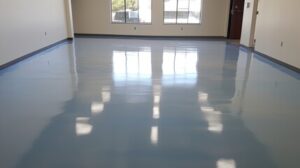Pests are organisms such as fungi, bacteria, insects, nematodes and vertebrates that damage or destroy crops, plants, buildings and household furnishings. They can also introduce diseases in people and pets.
Keep pests out of your house by removing food, water and shelter. Store food in tightly sealed containers, wipe down countertops, and clean and sanitize garbage cans regularly. Contact Pest Control Randolph NJ now!

Pests are unwanted organisms that cause damage to living or growing things and often threaten human health and safety. They may be rodents, birds or insects, and they typically are considered a nuisance when they infiltrate homes and gardens. Identifying the pest is the first step to controlling them and implementing effective pest control strategies that don’t use poisons.
Proper identification involves learning the basic facts about the pest, such as what it eats, its preferred environment and harborage areas, its life cycle, and the time of year when it most frequently appears in an area. Identification also includes recognizing symptoms of the pest’s presence and damage.
An insect that has been damaged by a disease or parasite can look very different than the healthy version of the same species. In addition, insects go through many stages in their lives and appear very different at each stage.
To accurately identify the pest, inspect the affected plant closely for signs of the organism, including discoloration and other identifying marks. A good reference source can help with this task and it is always best to work with an expert.
When the pest is identified, it can be compared to a list of known pests that occur in the area. This list can then be used to determine the most appropriate control measures to use.
Control methods can be categorized as prevention, suppression or eradication. Eradication is usually a long-term goal that’s achieved by eliminating the pests from the environment. Suppression is a more common goal in outdoor pest situations where it’s possible to reduce the population to an acceptable level.
Prevention is a common goal for both homeowners and gardeners and can be accomplished by reducing the attractiveness of a site to the pests. This can be done by removing food and water sources, by repairing or closing entry points, and by eliminating shelter sites.
Keep a close eye on windows, doorways and vents in the home for indications of a pest infestation. In the garden, weeding regularly, removing leaf litter and compost piles, fixing leaky pipes and eliminating overwintering places are all important steps in preventing pest invasions.
Identifying the Source of the Infestation
If you suspect pests in your home, there are certain signs you should watch out for. These include droppings, tracks and other signs of activity. The appearance of these marks can help you identify the type of pest that is causing problems. For example, rodent droppings are small and pellet-like, while cockroaches leave greasy specks of feces on surfaces. Other signs of pests include gnawed food and other materials, as well as musty or rotten smells. Scratching or scampering noises, especially at night, can also indicate the presence of a pest infestation.
Many pests enter homes because they provide shelter and other conditions that are attractive to them. The natural ecosystems in which pests live are disappearing as more land is converted to housing and commercial buildings. As the climate changes, pests seek shelter from the cold and moisture. They also may seek out new food sources or a place to lay eggs. Many pests find their way into houses through small holes and cracks in the foundation, walls, and around windows and doors. They can also be carried in by people or pets.
Besides providing shelter and food, pests can cause other types of damage to property and structures. For instance, rodents can chew through wires and other materials in the house to get to food or water supplies. They can also contaminate food by spreading bacteria to it. In addition, pests can destroy plants by eating the leaves and roots of the plants.
Some pests spread diseases to people and other animals. They can carry pathogens, including fungi and viruses, which can cause illness in humans, animals, and crops. These pathogens can be found in the droppings of pests, as well as on the skin or in other contact with them.
Preventing pest infestations is the best course of action. You can do this by sealing any access points in the house, such as openings under doors and windows, caulking and sealant around the foundation, and installing tight screens over vents. In addition, you can keep insects and rodents away by keeping garbage cans tightly closed, removing pet waste promptly, and cleaning up fallen debris in the yard.
Identifying the Area of Infestation
It’s not unusual for homeowners to find a few spider webs, ants or flies in their home, especially since indoor living spaces are naturally connected to the outdoor environment. These pests, however, are typically just transient guests and can be prevented with meticulous hygiene, sealing entry points and careful food storage and disposal.
But when these pests start multiplying, they become a problem and need to be dealt with immediately. A pest infestation is an unwelcome invasion of pests that pose a health risk or are causing destruction to property. The sooner this is identified, the better.
There are a few surefire signs that indicate a pest infestation. These include droppings, nesting and a host of other visible or audible signs. Rodents and insects often leave droppings that are easy to identify, such as pellets or feces. These may also contain a foul smell and emit pheromones that attract other pests.
Nests or burrows are another indication of a pest infestation, and they may be made out of different materials depending on the type of pest. It’s important to check and clean all dark and cluttered areas where pests like to hide, such as attics or basements. Insects and rodents tend to leave their mark by chewing through wood, furniture or even insulation. Identifying the damage they cause can help you decide on a control strategy.
Insects can chew through wires, leading to electrical damage and fire hazards in a home or business. They can also eat through drywall, compromising the integrity of the structure and putting those inside at risk for serious injuries or illnesses.
In addition to the above, other visible signs of a pest infestation include unexplained holes and tears in fabrics, such as rugs, clothing and other soft goods. This is often caused by the gnawing of small pests, such as termites and carpenter ants, and should be taken care of right away before they progress further. Pests can also be attracted to moisture in the air and may swarm around damp or waterlogged surfaces. This can lead to mold, mildew and other harmful substances that must be controlled.
Developing a Control Strategy
The success of pest control depends on a comprehensive approach that considers all available tactics and factors. This is what defines integrated pest management (IPM). The most successful treatments are those that disrupt the life cycle of a pest at every stage. This is only possible if the pest is identified and treated correctly at each step.
The goal of a pest control program is to protect desirable plants from damage by eliminating or controlling the pest population. This requires knowledge of the pests’ life cycles, damage potential, natural enemies, weather and other environmental conditions. It also requires knowing when the pest is most likely to appear in a given location or under certain circumstances.
Pest populations are usually highly concentrated, so pest control activities may require localized attention to maintain the desired balance. This is especially true of plant-feeding insects, where a single lawn may have copious millipedes or grubs while another nearby lawn has almost none. This concentration attracts parasitoids and predators that reduce the pest population. However, when the pest population gets too high, parasitoids and predators become depleted. When this happens, the pests increase in number and spread to other areas.
A variety of biological and chemical controls are available to reduce the size of pest populations. Biological control involves using natural predators and disease organisms that ordinarily occur in nature to suppress pests. For example, the bacterium Bacillus thuringiensis produces a toxin that destroys the midgut of caterpillars. It is effective on more than 400 different insect species without harming people, pets or domestic animals.
Chemical control uses a variety of substances to disrupt the development or activity of pests. Insecticides are the most common chemicals used to kill pests, but herbicides can be effective on some pests as well. Other control measures include physical and cultural controls. Physical controls are the use of traps, screens and barriers to prevent pests from entering an area. Altering the environment, including light, heat and humidity, can sometimes affect the growth of some pests.
Integrated pest management takes a long-term view of the situation and recognizes that the treatment site is often part of a larger ecosystem. The actions of all living organisms and nonliving things that share the treatment site affect each other in one way or another. Unless they are carefully considered, a pest control effort may cause more harm than the problem it is trying to solve.




